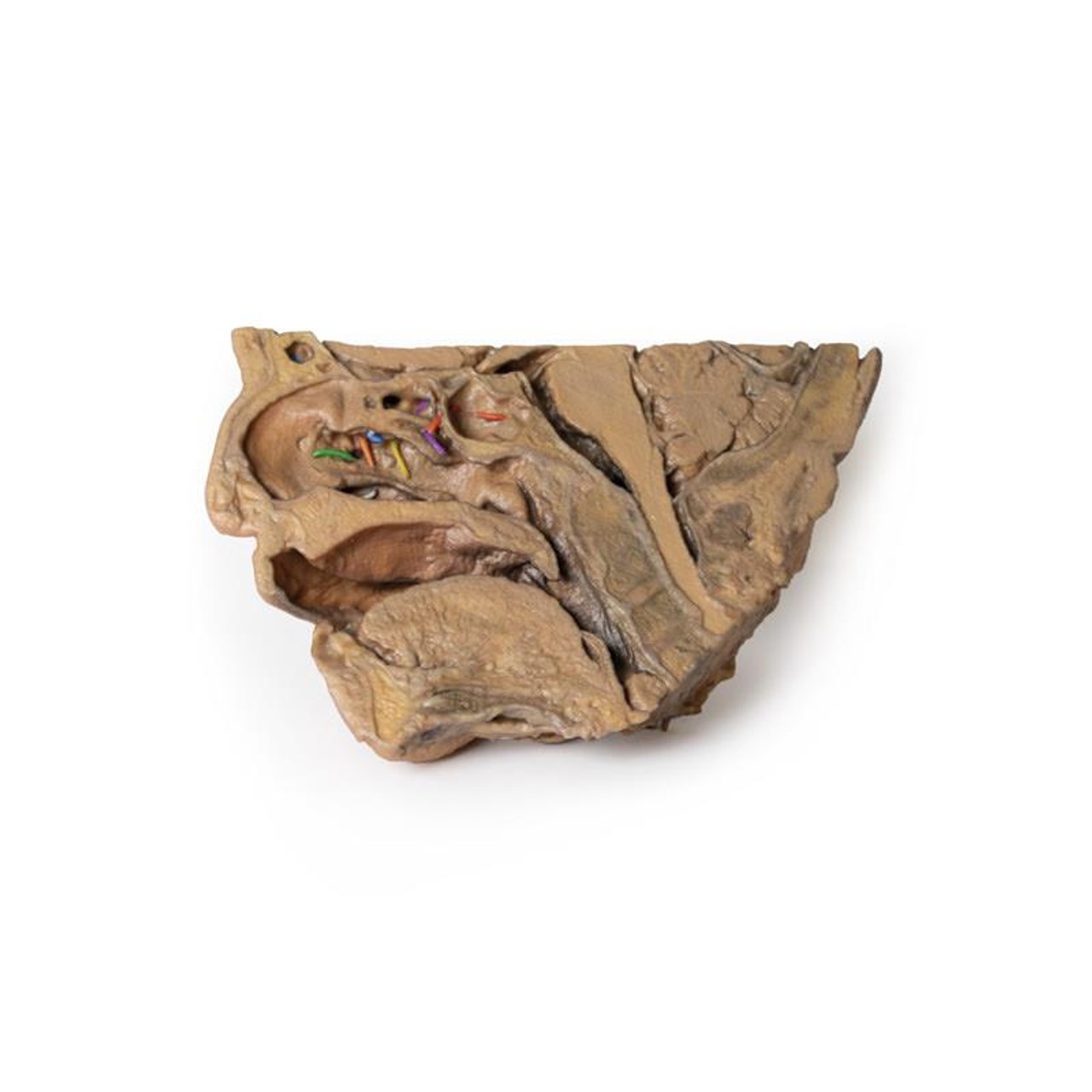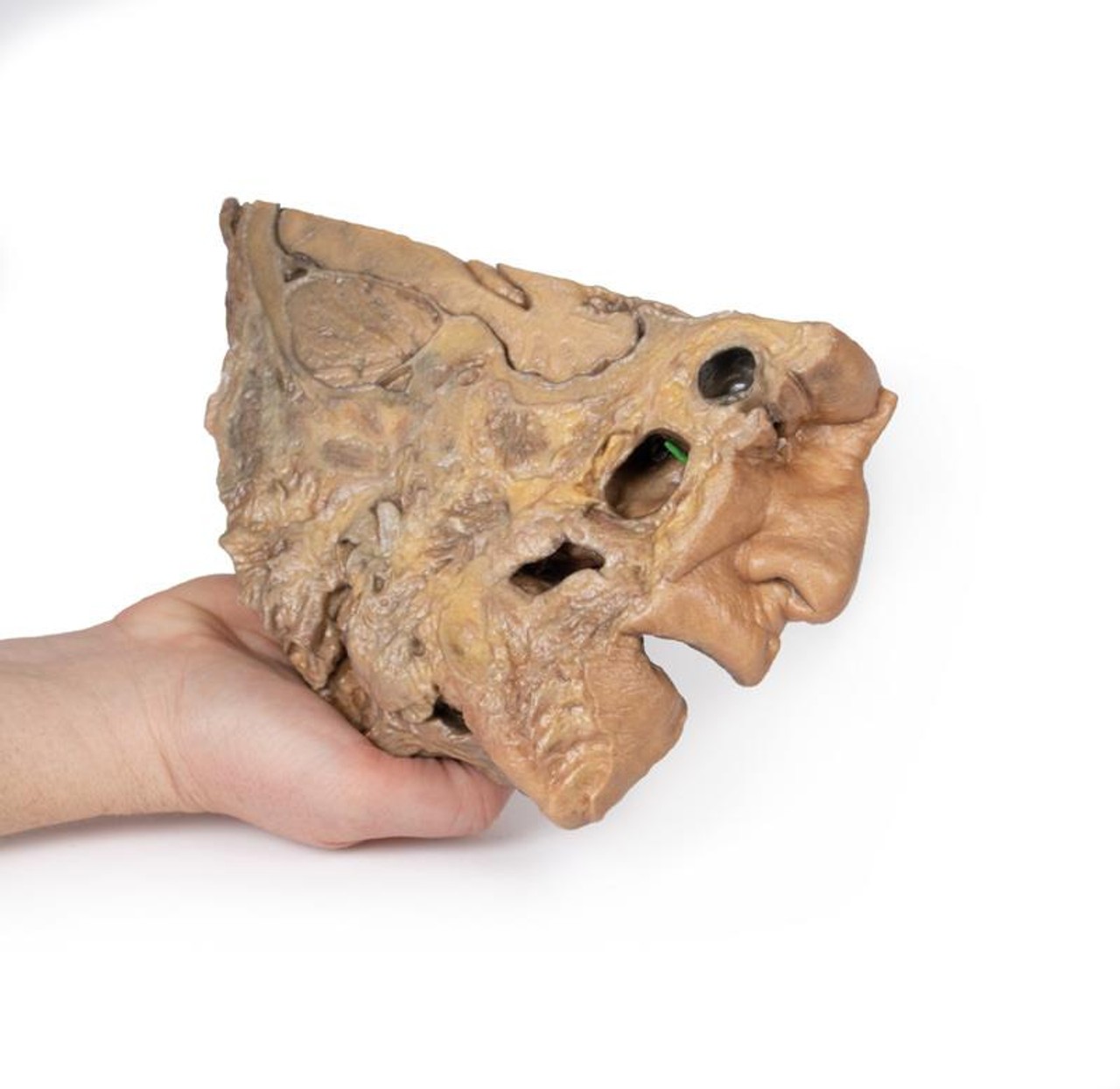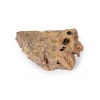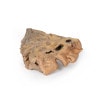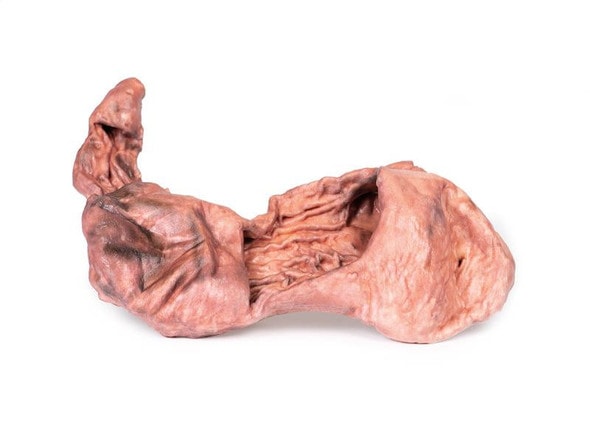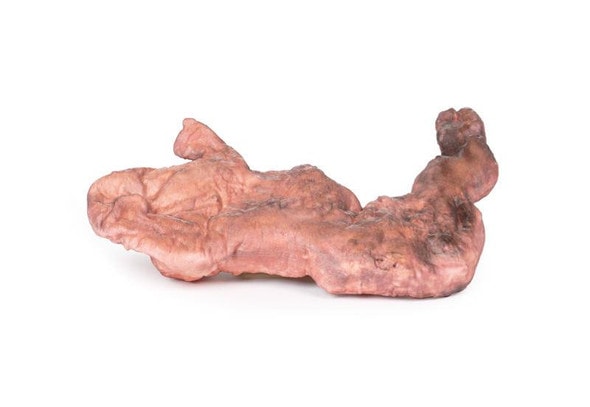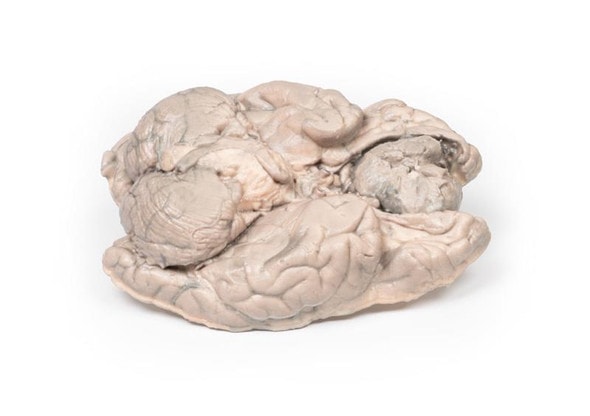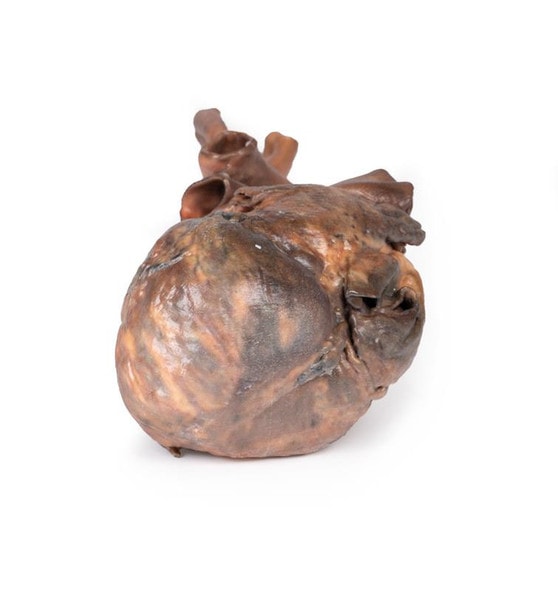Description
This 3D model provides a midsagittal to parasagittal segment of a right head to demonstrate the relationships and passageways of the paranasal sinuses. These passageways have been highlighted with thin colored markers to indicate the relationship of these communicating routes between the paranasal sinuses and the nasal cavity.
Starting anteriorly in the nasal cavity, the opening of the nasolacrimal duct (white) is present just deep to the inferior nasal conchae. The middle nasal concha has been sectioned to allow for a clear view of the opening of the maxillary sinus (visible in the parasagittal plane) across the semilunar hiatus (green), as well as the drainage of the frontal sinus (blue; with the sinus visible superiorly in the section and in the transverse cut through the specimen) and the anterior (orange) and middle (yellow) ethmoidal cells. The opening of the posterior ethmoidal cells into the superior meatus is shown through the purple marker, which is visible within a small opened window into the ethmoid just superior to the nasal cavity. Finally, the opening of the sphenoid sinus is marked in red and visible through the opened sphenoid sinus itself just superior to the nasopharyngeal region.
In addition to these pathways, this 3D model also captures some of the surrounding anatomy within the section. Visible in the midsagittal view are the other primary structures of the nasal cavity from the nostril to the opening of the auditory tube posteriorly. The soft palate and uvula are preserved, as is the rest of the pharynx just to the level of the epiglottis and collapsed laryngeal region at the inferior part of the preserved specimen. The oral cavity is displayed in cross section, with distinct genioglossus and geniohyoid muscles. In the cranial cavity, parts of the brain are preserved including the inferior parts of the frontal lobe and the right optic nerve/chiasm/tract. The pituitary gland is visible in cross-section just superior to the sphenoid sinus. The pons, medulla oblongata, and most of the cerebellum are present, with a small part of the tentorium cerebelli separating the cerebellum from the right occipital lobe of the cerebrum. On the parasagittal side of the specimen there is a continuation of the tentorium cerebelli separating these parts of the brain, with clear cross-sections of the transverse sinus and part of the sigmoid sinus on either side of the cerebellum. Overlying this is a small part of the medial temporal lobe of the cerebellum with part of the anterior horn of the lateral ventricle deep within the lobe.
Advantages of 3D Printed Anatomical Models
- 3D printed anatomical models are the most anatomically accurate examples of human anatomy because they are based on real human specimens.
- Avoid the ethical complications and complex handling, storage, and documentation requirements with 3D printed models when compared to human cadaveric specimens.
- 3D printed anatomy models are far less expensive than real human cadaveric specimens.
- Reproducibility and consistency allow for standardization of education and faster availability of models when you need them.
- Customization options are available for specific applications or educational needs. Enlargement, highlighting of specific anatomical structures, cutaway views, and more are just some of the customizations available.
Disadvantages of Human Cadavers
- Access to cadavers can be problematic and ethical complications are hard to avoid. Many countries cannot access cadavers for cultural and religious reasons.
- Human cadavers are costly to procure and require expensive storage facilities and dedicated staff to maintain them. Maintenance of the facility alone is costly.
- The cost to develop a cadaver lab or plastination technique is extremely high. Those funds could purchase hundreds of easy to handle, realistic 3D printed anatomical replicas.
- Wet specimens cannot be used in uncertified labs. Certification is expensive and time-consuming.
- Exposure to preservation fluids and chemicals is known to cause long-term health problems for lab workers and students. 3D printed anatomical replicas are safe to handle without any special equipment.
- Lack of reuse and reproducibility. If a dissection mistake is made, a new specimen has to be used and students have to start all over again.
Disadvantages of Plastinated Specimens
- Like real human cadaveric specimens, plastinated models are extremely expensive.
- Plastinated specimens still require real human samples and pose the same ethical issues as real human cadavers.
- The plastination process is extensive and takes months or longer to complete. 3D printed human anatomical models are available in a fraction of the time.
- Plastinated models, like human cadavers, are one of a kind and can only showcase one presentation of human anatomy.
Advanced 3D Printing Techniques for Superior Results
- Vibrant color offering with 10 million colors
- UV-curable inkjet printing
- High quality 3D printing that can create products that are delicate, extremely precise, and incredibly realistic
- To improve durability of fragile, thin, and delicate arteries, veins or vessels, a clear support material is printed in key areas. This makes the models robust so they can be handled by students easily.

